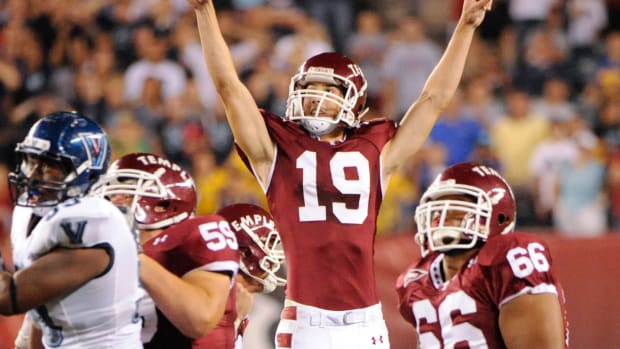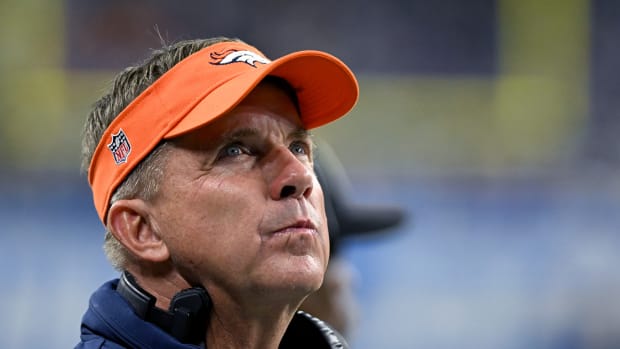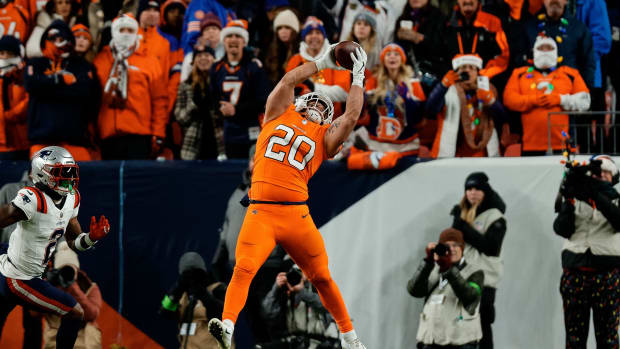Dink & Dunk: Analytics Imply the Teddy Bridgewater Offensive Model can Work for Broncos
The moment the Denver Broncos announced Teddy Bridgewater as the starting quarterback, there seemed to be quite a pushback concerning his perceived lack of deep ball prowess. The prevailing notion was that defenses would stack the box and stuff the Broncos' offense because no teams will be afraid of a 'check-down Charlie.'
Even if those opinions are true — though it's more overreaction than anything — the 'dink and dunk' game works in the NFL. I analyzed 10 NFL seasons of play-by-play data which indicate that a short passing game and running the football can be quite effective at moving the chains.
Allow me to break it down.
Improving the Odds
A team giving itself more chances, even if it isn't done with big-splash plays, makes for a good offense. Look no further than the origins of the West Coast offense as devised by the late Bill Walsh and his horizontal passing attack that kept defenses on their heels, leading to a dynasty in San Francisco.
Bottom line, moving the chains would give the Broncos more chances to score. At the very least, it will help the strongest unit on the club: the defense.
In the 10 years of data, there have been approximately 59,000 drives and more than 37,000 of them have resulted in moving the chains at least once. Included in all of those drives are many instances of defenses 'stacking the box' and quarterbacks without strong arms leading an offense.
I'm not talking about just converting on third down. Any time a team crosses that marker, on any down, it gives itself another set of chances at doing it again.
Breaking it down further, it doesn’t matter whether or not a team runs or passes on first down. It's a 50/50 split between run and pass for those 37,000 drives that resulted in a first down for the offense.
Getting at least three yards on that play was the threshold for putting the offense in the required position to move the chains on third down. Instead of setting up 22% odds on a first-down play that gained less than three yards, those plays that netted more than three improved the chances of success on third down to nearly 50%.
Digging even deeper, some light is shed on the effectiveness of rushing the ball on the first play in a set of downs. Most passes that are thrown on that first play wind up as no gain due to incompletions.
Of the ~8,700 passes that gained zero yards, only ~48% of those drives ended up moving the chains at least once. That percentage is slightly better than runs that gained zero yards, which is 46%.
When including plays that gained one, two, three, and four yards, the running games becomes the more viable option. Rushing the ball increases the offense’s chances as the team churns greater yardage up to four yards compared to the passing game.
I’m not sure why this is happening — when both ways of attacking are gaining the same yardage, but it is happening.
Rushing Attack Provides Best Odds of Success
The rushing attack bests the passing attack overall. Running on first down to start the drive and gaining 0-to-4 yards has a 55% chance of moving the chains. Passing on that initial first down and gaining 0-to-4 yards has a 52% chance of doing the same.
Frankly, 3% is a small difference and it is likely insignificant, but it is nice to know that the running game in today’s NFL can still be an effective tool at attacking a defense.
What it Means
What this analysis suggests is that an offense can run the ball or 'dink and dunk' and still have a decent chance at getting another first down. This is important for the Broncos because they're going to have a strong running game with two running backs — Melvin Gordon and Javonte Williams — that can break tackles and churn out yards.
Williams is the back most likely to get those extra hard-fought yards and he is a fresh young rookie. It bodes well for the Broncos because Bridgewater is able to connect with his safety valve quite regularly.
He plays it safe until he gets a shot downfield. Playing it safe works in the NFL, even if it doesn’t get the fans hyped up.
A boring offense that can move the chains combined with a defense that may end up being top-5 in the league will win games for the Broncos. That should make fans happy, even if it doesn’t get them excited.
Follow Thomas on Twitter @ThomasHallNFL.
Follow Mile High Huddle on Twitter and Facebook.
Subscribe to Mile High Huddle on YouTube for daily Broncos live-stream podcasts!




